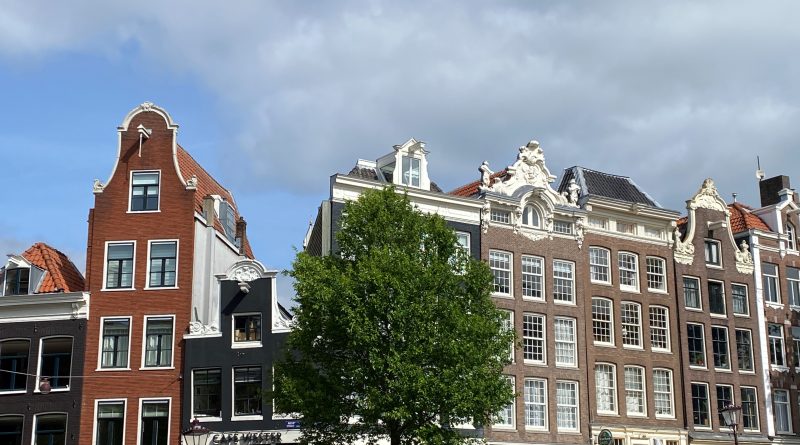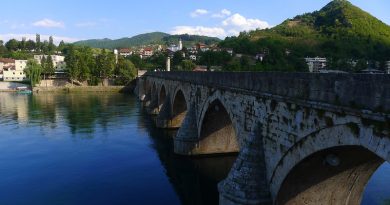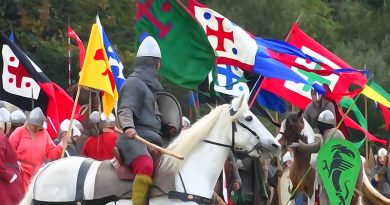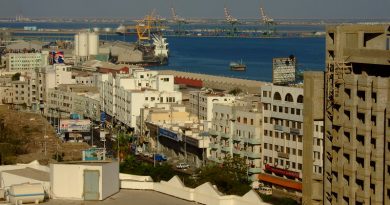Cycling the Golden Age
Amsterdam in the 17th century was enjoying its Golden Age. Freed from Spanish Catholic rule after a bitter war, the new Protestant nation had become a major European force thanks to its sea and trading power.
The Rijksmuseum holds many of the treasures from this era of boom ,and eventually bust, symbolised by the work of great master artists such as Rembrandt.
His masterpiece, the Night Watch, remains one of the defining works from the Age.
The Golden Age masters made their reputations in portraiture. Their representations of society players in newly independent Protestant Holland is among their best known work. But they also dabbled in landscapes, still life, and everyday life.
From Amsterdam, a picturesque ride through the back routes and canals along bike trails which avoid the traffic take you to nearby Haarlem, home to a museum which exhibits the work of Frans Hals, another master painter from the Golden Age.
Hals is overshadowed by Rembrandt but as a portrait painter he is seen by some critics as his equal . Hals too painted some exquisite portraits of members of Dutch Society in the 17th century.
Hals lived and painted into his 80s and the museum is located in a poor house in Haarlem where he produced a lot of his later work.
Most Dutch cities are connected by a system of canals and many like Haarlem are just a few kilometres from the sea . We head west where the Dutch congregate in huge numbers at resorts like Zaandvort on the often rare warm summer days here.
It’s been a ritual played out for centuries.
From Zaandfort you enter the remote coastal park which takes you south along the North Sea coast before we head inland to Leiden.
Leiden was the Birthplace of Rembrandt. It’s also famous for its windmill, one of the oldest in the Netherlands dating back to 1723 . It was working until 50 years ago.
Leiden was at the centre of Tulipmania which gripped the Netherlands in the 16th century.Its botanical gardens is the oldest in the Netherlands and was where Carolus Clausius cultivated the first tulips from a single bulb brought here from Ottoman Turkey. It’s also where Franz Von Siebold brought more than 700 unknown plants as Dutch traders reached out around the world.
The great master Rembrandt spent the first 25 years of his life in Leiden before being lured to Amsterdam.
Cycling through the Countryside – and forests too – it’s only 14 kilometres from Leiden to The Hague, The Capitol of the Netherlands . The Upper house of the Dutch Parliament still meets here where the central courtyard of the Binnehof was once used for executions.
It’s Mauritishuis museum next door was once home to a wealthy governor of the Brazilian. Colonies and now it’s home to an extraordinary array of Dutch masters from the Golden Age including Rembrandt who was only 25 when he painted a group of Amsterdam surgeons in “The Anatomy lesson of Dr Nicolas Tulp “. His self portrait was painted the year of his death in 1669.
The museum is also home to arguably Johannes Vermeer ‘s most famous painting “Girl with the Pearl Earing.” Vermeer
also painted the most famous landscape of the Golden Age, The View of the City of Delft.
And it’s to Delft, Vermeers’s home town that we visit next on the final leg of our Masters of the Golden Age bike tour.
It’s another 14 kilometres from The Hague along a series of canals which connect to Delft.
This small city witnessed many events during the Golden Age and symbolises much about the era. The New Church built over three centuries from 1386, has the second tallest bell tower in The country, and occupies a special place in the story of Dutch independence.
The Golden Age came about after the Protestant Dutch won independence from Catholic Spain after a bitter 80 year long war. More than a hundred thousand perished in a viscous struggle which saw Phillip
The 2nd, the Spanish king, and his appointed Coloniser in chief to the Low Countries, the Duke of Alba, unleash the terrors of the Inquisition on the Dutch in order to protect Catholicism from Rising Protestantism
William of Orange was the Dutch Noble that led the resistance and was credited with the eventual victory .But not before he was assassinated in Delft on order of Phillip 2nd in 1584.The bullet holes on a staircase inside a former monastery where it happened can still be seen.
William is buried here in the New Church built in 1386.In the centuries since other Dutch royals descended from the line of their founder freedom fighter .. the House of Orange..have chosen to be interned here too.
Despite its impressive stained glass windows, Delft’s New Church sets a tone common to many Dutch churches. Devoid of lavish decoration , the interiors are almost austere, a reaction to the grand ornamentation of many Catholic Churches. After the Spanish were defeated many Catholic Churches were sacked and ornamentation removed as a sign of protest.
Delft, like many Dutch cities, then grew rich during the Golden Age as trade and business soared. Delft became famous for its reproduction of Chinese porcelain, which provided the foundation for Delft’s pottery businessses.
Wealth created the demand for art and Vermeer, like Rembrandt and Hals, was sort after as a portrait artist although he is best known for his exquisite use of light and as a painter of daily life and ordinary people.
The Golden Age which saw the Dutch exploring the globe and reaping its treasures also saw Map mapping, celebrating new found knowledge, becoming an art form as well . Many of Vermeer’s paintings feature maps.
Like Rembrandt and Hals, Vermeer died poor. He was buried in Delft’s Old Church , the resting place of many prominent citizens of the city.But like his contempories, his work gained appreciation and value only in the centuries following his death.
Nowadays it’s still possible in this timeless city of Delft to see glimpses of the famous view painted one of the Great Masters of the Golden Age nearly 500 years ago.




